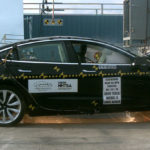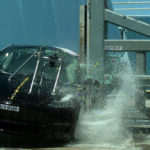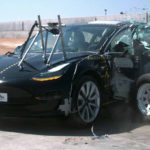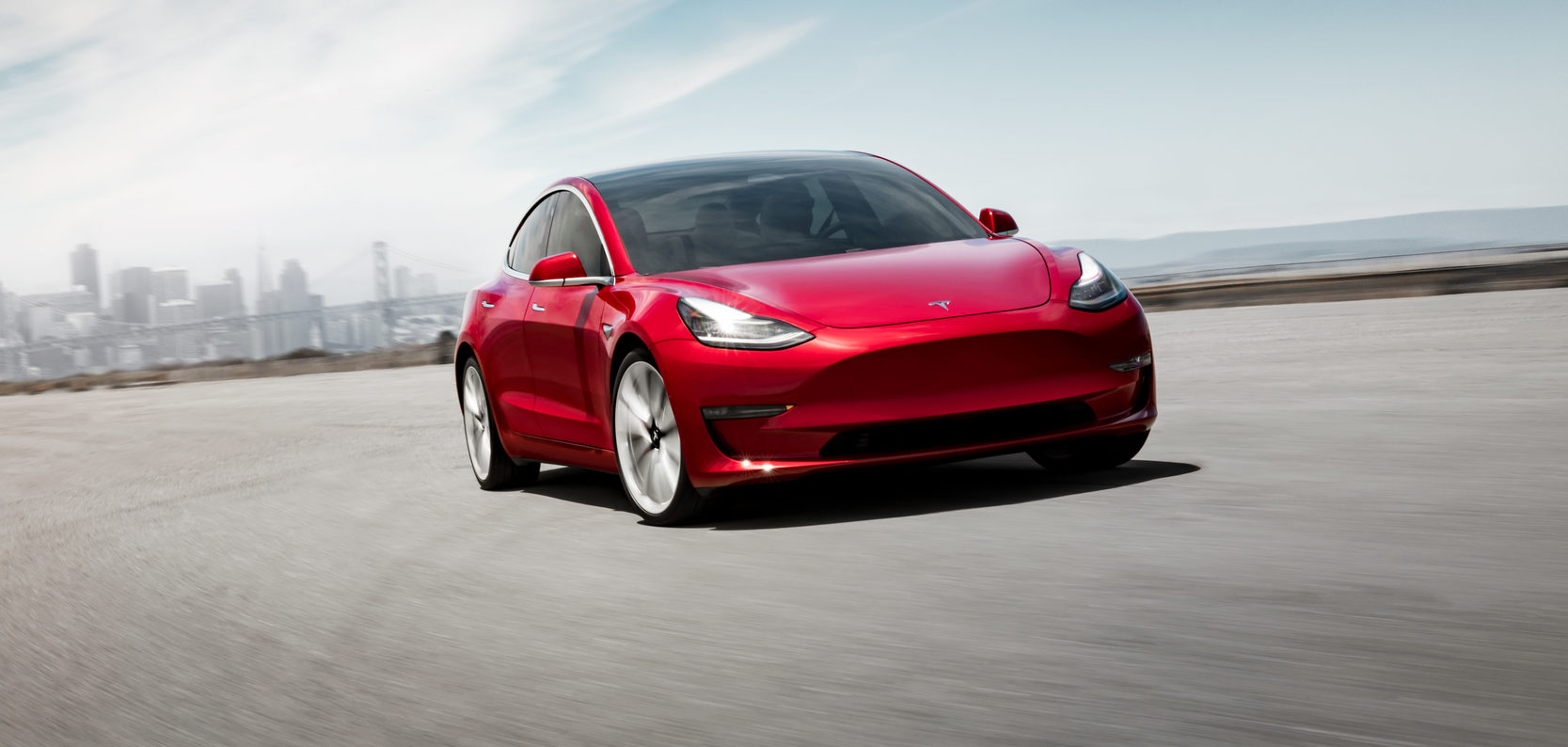
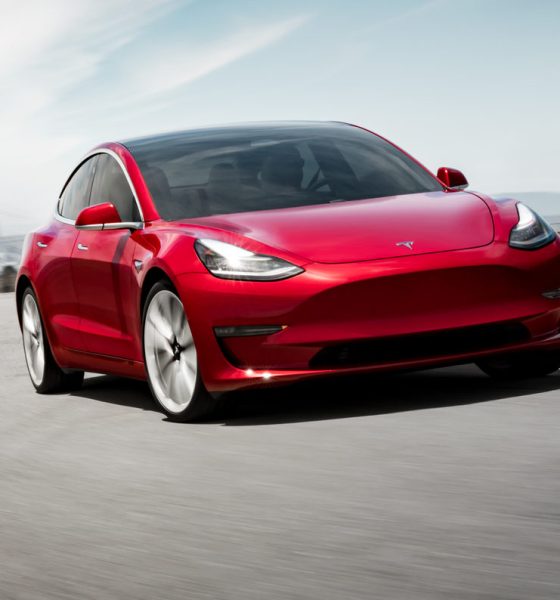
Investor's Corner
Sorry Jim Chanos, but the Tesla Model 3 is definitely not ‘looking to be a lemon’
A lot of Tesla’s immediate future is tied to the Model 3. Elon Musk said as much in an interview last July, when he accurately described the Model 3 ramp as a “bet-the-company” situation. This means that if the Model 3 proves a success, Tesla could take a definitive step towards Elon Musk’s Master Plan; but if the vehicle fails, it would be catastrophic for the company.
The Model 3’s failure is something that Jim Chanos, arguably the most high-profile of Tesla’s short-sellers, is looking forward to. Chanos has taken an aggressive stance against the electric car company, never hesitating to express his belief that TSLA stock is worth $0. Over the years, the prominent short-seller has frequently attacked the electric car maker, pointing out Elon Musk’s alleged fraudulent activities and Tesla’s weaknesses as a company.
So far, Chanos’ bet against Tesla has not been paying off. His hedge fund, Kynikos Capital Partners, has not done very well since 2015, a time in which he held a short position against Solar City, and not long before he announced that he was shorting Tesla. Including a 9% loss through July of this year, Kynikos exhibited a net annualized return of 4.86% since 2015, compared with the S&P 500’s return of 12.17% during the same period.
Considering the high-stakes bet that Tesla took with the Model 3, the success of the electric car is something that would not do any favors for Kynikos’ already-embattled year. Chanos, for his part, noted in a recent interview with Institutional Investor that he still likes his odds on Tesla. He does, for one, believe that Elon Musk “handcuffed” himself by promising profitability during the second-half of 2018. He also believes that there are inherent problems with the Model 3, as shown in its production slowdowns in August and alleged issues with the vehicle.
“It’s looking to be a lemon,” Chanos said.
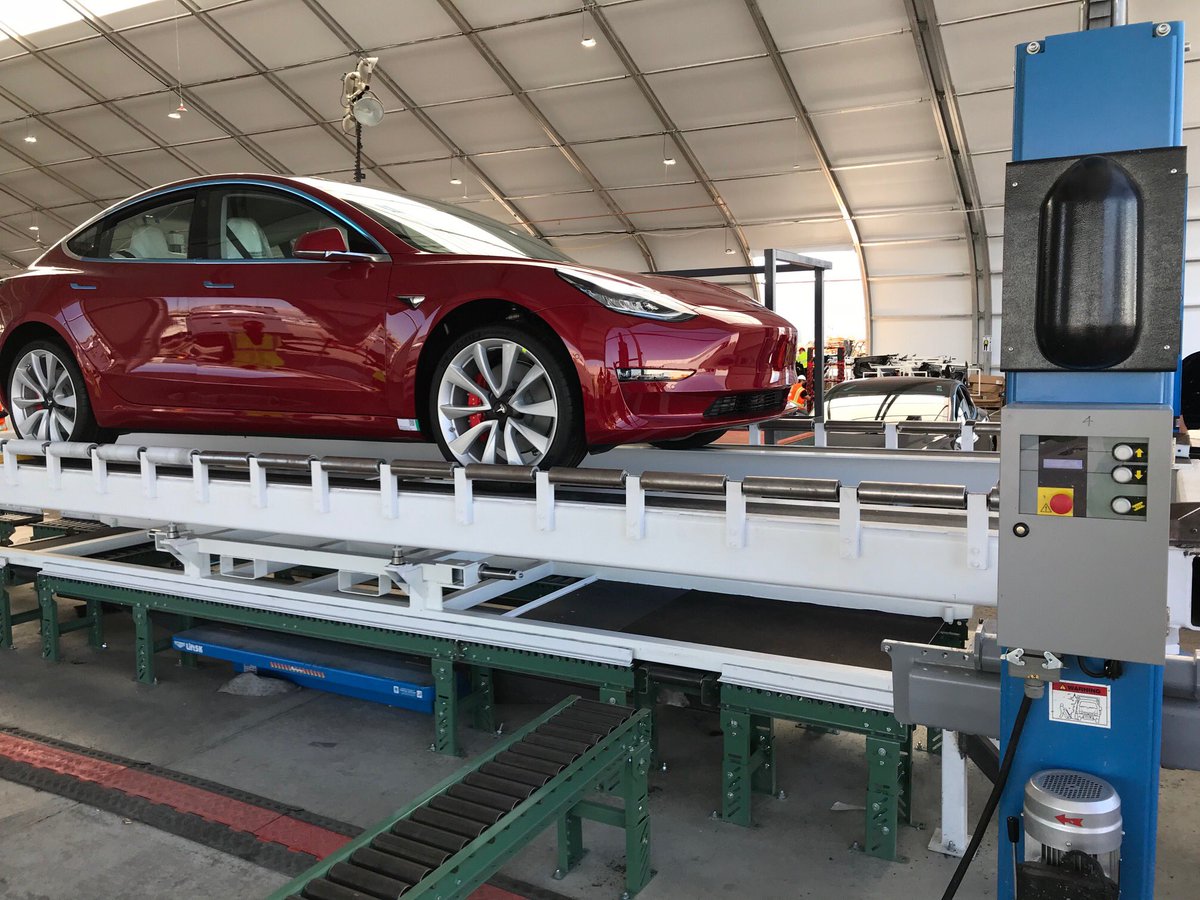
As the third quarter draws to a close, the prominent short-seller’s thesis against Tesla would be put to the test. The electric car maker, after all, has set aggressive targets for itself this Q3, aiming to build 50,000-55,000 Model 3 during the quarter while attaining profitability. Whether Tesla could accomplish its ambitious objectives remains to be seen, but there is one thing that is starting to become evident — the Model 3 does not seem to be a lemon at all.
The electric car’s production issues are well-known, and the teething problems that Tesla exhibited in the vehicle’s initial run were evident, as shown by the first observations of teardown specialist Sandy Munro when he started tearing down an early-production Model 3. But even Sandy Munro eventually admitted that behind the inconsistent panel gaps and imperfect fit and finish issues of the early production Model 3 he tested, he was thoroughly impressed with Tesla’s battery technology, electronics, performance, and ride quality. Tesla’s fit and finish on the Model 3 has improved since the car that Munro tested rolled off the assembly line, and the vehicle has only gotten more praise since then.
The electric car, particularly the Model 3 Performance, has practically garnered unanimous praise from professional auto reviewers. Various auto journalists, from the Wall Street Journal to Car & Driver to Road & Track (to name a few), have praised the vehicle, with the consensus being that it is a car that can disrupt the high-performance sedan market dominated by longtime legends such as the BMW M3.
- The Tesla Model 3 gets crash tested by the National Highway Traffic Safety Administration. [Credit: NHTSA]
- The Tesla Model 3 gets crash tested by the National Highway Traffic Safety Administration. [Credit: NHTSA]
- The Tesla Model 3 gets crash tested by the National Highway Traffic Safety Administration. [Credit: NHTSA]
The Tesla Model 3 gets crash tested by the National Highway Traffic Safety Administration. [Credit: NHTSA]
The Model 3 was given a flawless 5-Star safety rating by the Highway Traffic Safety Administration as well, garnering perfect scores in all categories and subcategories. Videos of the vehicle’s frontal crash, side crash, and rollover crash depicted the electric sedan providing ample protection for its driver and passengers during collisions. With the Model 3’s rating, all of Tesla’s vehicles currently in production now have the distinction of having 5-Star safety ratings from the NHTSA.
Recent reports from the Tesla community in both the United States and abroad also indicate that the company has adopted an aggressive delivery schedule for reservation holders, with centers reportedly conducting handovers until 10 p.m. Other reports further suggest that Tesla’s delivery centers are handing over up to 100 cars per day.
Tesla’s capability to become profitable is linked to the Model 3, which would comprise the majority of its sales this quarter. A vote of confidence for this came in the form of analyses from a German teardown firm and Detroit’s Munro and Associates, both of which concluded that Tesla could make a profit with the Model 3. Munro, for one, noted after his teardown of the Long Range RWD Model 3 that the vehicle could give Tesla a 36% profit. More expensive trims, such as the Long Range Model 3 AWD and the Model 3 Performance, are likely even more profitable.
The third quarter is not yet finished, and much of Tesla’s production and delivery progress remains unknown. But all things considered, Jim Chanos’ bet against the Model 3 as a vehicle could very well end up being a disappointment for the esteemed short-seller.

Investor's Corner
Tesla stock closes at all-time high on heels of Robotaxi progress

Tesla stock (NASDAQ: TSLA) closed at an all-time high on Tuesday, jumping over 3 percent during the day and finishing at $489.88.
The price beats the previous record close, which was $479.86.
Shares have had a crazy year, dipping more than 40 percent from the start of the year. The stock then started to recover once again around late April, when its price started to climb back up from the low $200 level.
This week, Tesla started to climb toward its highest levels ever, as it was revealed on Sunday that the company was testing driverless Robotaxis in Austin. The spike in value pushed the company’s valuation to $1.63 trillion.
Tesla Robotaxi goes driverless as Musk confirms Safety Monitor removal testing
It is the seventh-most valuable company on the market currently, trailing Nvidia, Apple, Alphabet (Google), Microsoft, Amazon, and Meta.
Shares closed up $14.57 today, up over 3 percent.
The stock has gone through a lot this year, as previously mentioned. Shares tumbled in Q1 due to CEO Elon Musk’s involvement with the Department of Government Efficiency (DOGE), which pulled his attention away from his companies and left a major overhang on their valuations.
However, things started to rebound halfway through the year, and as the government started to phase out the $7,500 tax credit, demand spiked as consumers tried to take advantage of it.
Q3 deliveries were the highest in company history, and Tesla responded to the loss of the tax credit with the launch of the Model 3 and Model Y Standard.
Additionally, analysts have announced high expectations this week for the company on Wall Street as Robotaxi continues to be the focus. With autonomy within Tesla’s sights, things are moving in the direction of Robotaxi being a major catalyst for growth on the Street in the coming year.
Elon Musk
Tesla needs to come through on this one Robotaxi metric, analyst says
“We think the key focus from here will be how fast Tesla can scale driverless operations (including if Tesla’s approach to software/hardware allows it to scale significantly faster than competitors, as the company has argued), and on profitability.”

Tesla needs to come through on this one Robotaxi metric, Mark Delaney of Goldman Sachs says.
Tesla is in the process of rolling out its Robotaxi platform to areas outside of Austin and the California Bay Area. It has plans to launch in five additional cities, including Houston, Dallas, Miami, Las Vegas, and Phoenix.
However, the company’s expansion is not what the focus needs to be, according to Delaney. It’s the speed of deployment.
The analyst said:
“We think the key focus from here will be how fast Tesla can scale driverless operations (including if Tesla’s approach to software/hardware allows it to scale significantly faster than competitors, as the company has argued), and on profitability.”
Profitability will come as the Robotaxi fleet expands. Making that money will be dependent on when Tesla can initiate rides in more areas, giving more customers access to the program.
There are some additional things that the company needs to make happen ahead of the major Robotaxi expansion, one of those things is launching driverless rides in Austin, the first city in which it launched the program.
This week, Tesla started testing driverless Robotaxi rides in Austin, as two different Model Y units were spotted with no occupants, a huge step in the company’s plans for the ride-sharing platform.
Tesla Robotaxi goes driverless as Musk confirms Safety Monitor removal testing
CEO Elon Musk has been hoping to remove Safety Monitors from Robotaxis in Austin for several months, first mentioning the plan to have them out by the end of 2025 in September. He confirmed on Sunday that Tesla had officially removed vehicle occupants and started testing truly unsupervised rides.
Although Safety Monitors in Austin have been sitting in the passenger’s seat, they have still had the ability to override things in case of an emergency. After all, the ultimate goal was safety and avoiding any accidents or injuries.
Goldman Sachs reiterated its ‘Neutral’ rating and its $400 price target. Delaney said, “Tesla is making progress with its autonomous technology,” and recent developments make it evident that this is true.
Investor's Corner
Tesla gets bold Robotaxi prediction from Wall Street firm
Last week, Andrew Percoco took over Tesla analysis for Morgan Stanley from Adam Jonas, who covered the stock for years. Percoco seems to be less optimistic and bullish on Tesla shares, while still being fair and balanced in his analysis.

Tesla (NASDAQ: TSLA) received a bold Robotaxi prediction from Morgan Stanley, which anticipates a dramatic increase in the size of the company’s autonomous ride-hailing suite in the coming years.
Last week, Andrew Percoco took over Tesla analysis for Morgan Stanley from Adam Jonas, who covered the stock for years. Percoco seems to be less optimistic and bullish on Tesla shares, while still being fair and balanced in his analysis.
Percoco dug into the Robotaxi fleet and its expansion in the coming years in his latest note, released on Tuesday. The firm expects Tesla to increase the Robotaxi fleet size to 1,000 vehicles in 2026. However, that’s small-scale compared to what they expect from Tesla in a decade.
Tesla expands Robotaxi app access once again, this time on a global scale
By 2035, Morgan Stanley believes there will be one million Robotaxis on the road across multiple cities, a major jump and a considerable fleet size. We assume this means the fleet of vehicles Tesla will operate internally, and not including passenger-owned vehicles that could be added through software updates.
He also listed three specific catalysts that investors should pay attention to, as these will represent the company being on track to achieve its Robotaxi dreams:
- Opening Robotaxi to the public without a Safety Monitor. Timing is unclear, but it appears that Tesla is getting closer by the day.
- Improvement in safety metrics without the Safety Monitor. Tesla’s ability to improve its safety metrics as it scales miles driven without the Safety Monitor is imperative as it looks to scale in new states and cities in 2026.
- Cybercab start of production, targeted for April 2026. Tesla’s Cybercab is a purpose-built vehicle (no steering wheel or pedals, only two seats) that is expected to be produced through its state-of-the-art unboxed manufacturing process, offering further cost reductions and thus accelerating adoption over time.
Robotaxi stands to be one of Tesla’s most significant revenue contributors, especially as the company plans to continue expanding its ride-hailing service across the world in the coming years.
Its current deployment strategy is controlled and conservative to avoid any drastic and potentially program-ruining incidents.
So far, the program, which is active in Austin and the California Bay Area, has been widely successful.
